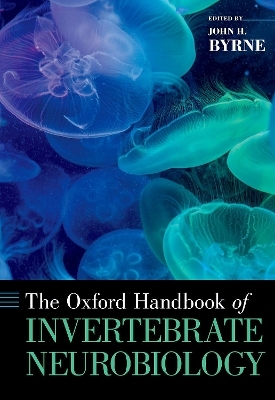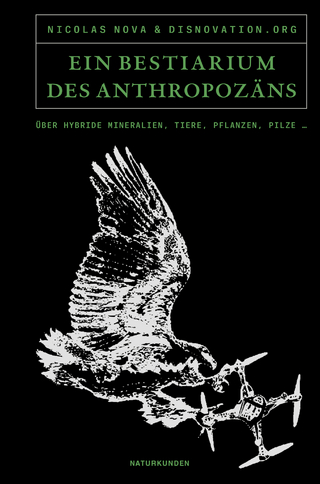
The Oxford Handbook of Invertebrate Neurobiology
Oxford University Press Inc (Verlag)
978-0-19-045675-7 (ISBN)
The Oxford Handbook of Invertebrate Neurobiology reviews the many neurobiological principles that have emerged from invertebrate analyses, such as motor pattern generation, mechanisms of synaptic transmission, and learning and memory. It also covers general features of the neurobiology of invertebrate circadian rhythms, development, and regeneration and reproduction. Some neurobiological phenomena are species-specific and diverse, especially in the domain of the neuronal control of locomotion and camouflage. Thus, separate chapters are provided on the control of swimming in annelids, crustaea and molluscs, locomotion in hexapods, and camouflage in cephalopods. Unique features of the handbook include chapters that review social behavior and intentionality in invertebrates. A chapter is devoted to summarizing past contributions of invertebrates to the understanding of nervous systems and identifying areas for future studies that will continue to advance that understanding.
John "Jack" H. Byrne, PhD is a professor and the June and Virgil Waggoner Chair in the Department of Neurobiology and Anatomy at McGovern Medical School at The University of Texas Health Science Center at Houston (UTHealth). He also serves as Director of the Neuroscience Research Center at UTHealth. Dr. Byrne's research uses a combination of experimental and computational approaches to provide an understanding of the cellular and molecular mechanisms of learning and memory. He has published as an author, co-author, or co-editor 215 journal articles, 84 book chapters, and 15 books. In his editorial capacities, Dr. Byrne has served as Editor in Chief of the journal Learning & Memory since 1996, in addition to serving as a member of the editorial boards of publications such as Behavioral Neuroscience, Journal of Neural Engineering, Journal of Neurobiology, Journal of Neurophysiology, Journal of Neuroscience, and Physiological Reviews.
Part I Diversity of Invertebrate Nervous Systems
1. Recent Trends in Invertebrate Neuroscience (Alan Gelperin)
2. The Divergent Evolution of Arthropod Brains: Ground Pattern Organization and Stability Through Geological Time (Nicholas J. Strausfeld)
3. Development of the Nervous System of Invertebrates (Volker Hartenstein)
4. Invertebrate Genomics Provide Insights Into the Origin of Synaptic Transmission (Thomas W. Abrams and Wayne Sossin)
5. Genetics of Behavior in C. elegans (Denise S. Walker, Yee Lian Chew, and William R. Schafer)
6. Genetic Analysis of Behavior of Drosophila (Björn Brembs)
7. Cnidarian Neurobiology (Richard Satterlie)
8. Flatworm Neurobiology in the Post-Genomic Era (Paul McVeigh and Aaron G. Maule)
Part II Cell and Molecular Biology
9. Morphology of Invertebrate Neurons and Synapses (Ian A. Meinertzhagen)
10. Neurotransmitters and Neuropeptides of Invertebrates (Lynne A. Fieber)
Part III Sensory Systems
11. Auditory Systems of Drosophila and Other Invertebrates (Yun Doo Chung and Jeongmi Lee)
12. Motion Vision in Arthropods (Alex S. Mauss and Alexander Borst)
13. Chemosensory Transduction in Arthropods (Monika Stengl)
14. Magnetoreception of Invertebrates (Martin Vacha)
Part IV Motor Systems
15. Rhythmic Pattern Generation in Invertebrates (Astrid A. Prinz)
16. The Feeding Network of Aplysia: Features That Are Distinctive and Shared With Other Molluscs (Elizabeth C. Cropper, Jian Jing, and Klaudiusz R. Weiss)
17. Control of Locomotion in Hexapods (Roy E. Ritzmann and Sasha N. Zill)
18. Neural Control of Swimming in Nudipleura Molluscs (Paul S. Katz and Akira Sakurai)
19. Control of Locomotion in Annelids (William Kristan)
20. Control of Locomotion in Crustacean (Daniel Cattaert and Donald Hine Edwards)
21. Motor Control in Soft-Bodied Animals: The Octopus (Guy Levy, Nir Nesher, Letizia Zullo, and Binyamin Hochner)
Part V Plasticity, Learning, and Memory
22. Nonassociative Learning in Invertebrates (Alex J. Yu and Catharine H. Rankin)
23. Associative Learning in Invertebrates (Romuald Nargeot and Alexis Bédécarrats)
24. The Vertical Lobe of Cephalopods: A Brain Structure Ideal for Exploring the Mechanisms of Complex Forms of Learning and Memory (Ana Turchetti-Maia, Tal Shomrat, and Binyamin Hochner)
25. Mechanisms of Axonal Degeneration and Regeneration: Lessons Learned From Invertebrates (Jiaxing Li and Catherine A. Collins)
Part VI Regulatory and Higher Functions
26. Evolution and Design of Invertebrate Circadian Clocks (Vu H. Lam and Joanna C. Chiu)
27. Neurobiology of Reproduction in Molluscs: Mechanisms and Evolution (Carlo Di Cristo and Joris M. Koene)
28. Search Strategies for Intentionality in the Honeybee Brain (Randolf Menzel)
29. Identifying Critical Genes, Neurotransmitters, and Circuits for Social Behavior in Invertebrates (Sarah Certel)
30. Rapid Neural Polyphenism in Cephalopods: Current Understanding and Future Challenges (Roger T. Hanlon and Chuan-Chin Chiao)
| Erscheinungsdatum | 18.02.2019 |
|---|---|
| Reihe/Serie | Oxford Handbooks |
| Verlagsort | New York |
| Sprache | englisch |
| Maße | 249 x 175 mm |
| Gewicht | 1610 g |
| Themenwelt | Naturwissenschaften ► Biologie ► Allgemeines / Lexika |
| Naturwissenschaften ► Biologie ► Humanbiologie | |
| Naturwissenschaften ► Biologie ► Zoologie | |
| ISBN-10 | 0-19-045675-2 / 0190456752 |
| ISBN-13 | 978-0-19-045675-7 / 9780190456757 |
| Zustand | Neuware |
| Haben Sie eine Frage zum Produkt? |
aus dem Bereich


